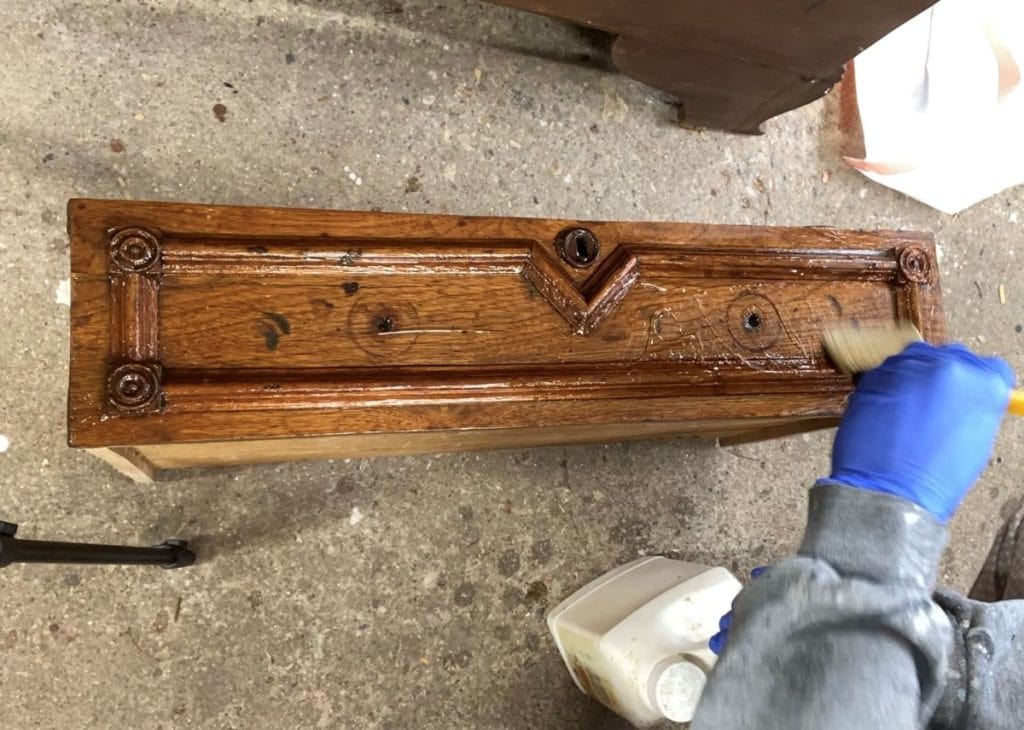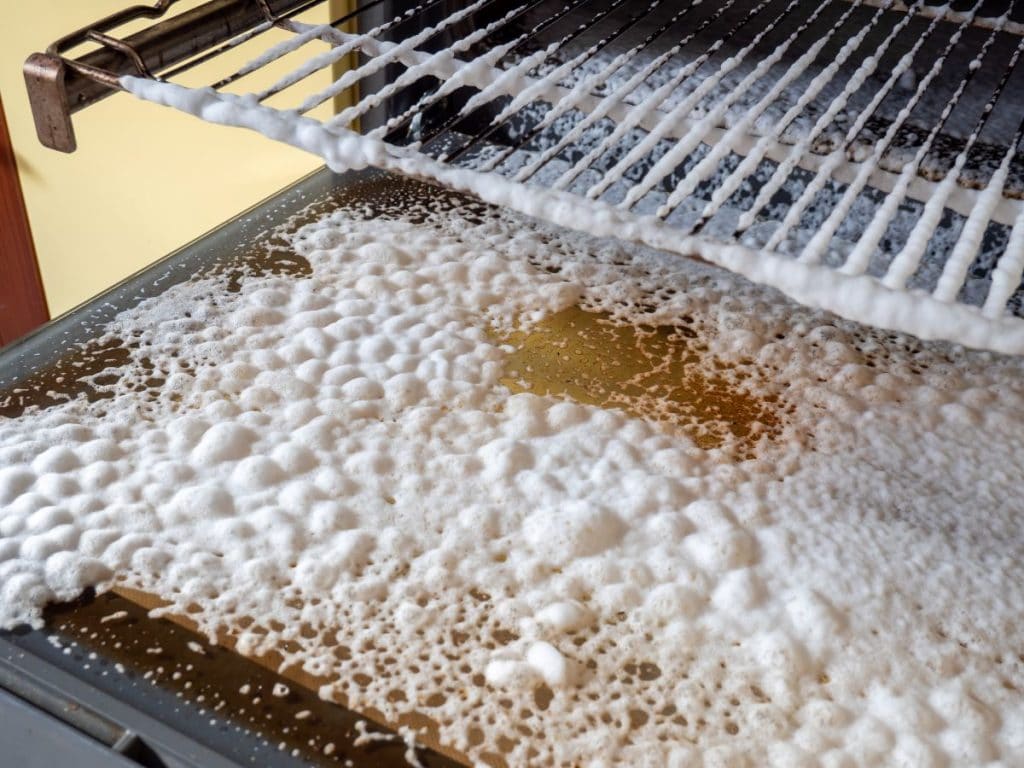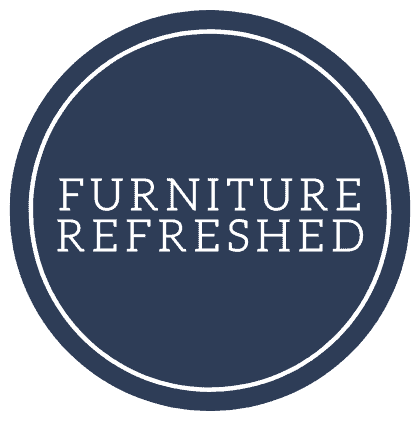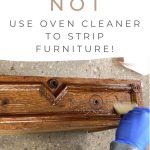Why you should NOT use Oven Cleaner to Strip Furniture!

If you follow any DIY or furniture-flipping influencers on social media, chances are you’ve seen this wood stripping “hack.” oven cleaner as an ‘easy’ way to strip and lighten wood furniture. Using oven cleaner to strip furniture is billed as an “easy” way to strip and lighten wood furniture. This trend became popular a few years ago, and recently, several people have asked me about it.
I want to start by saying my intention with this article is NOT to be controversial. When I first saw this trend a few years ago, I did some research and decided it wasn’t something I wanted to try (even though the results do look great). Everyone has to decide what they’re comfortable with when it comes to the products they use. My goal with this post is to provide information so that you can make a choice you’re okay with.
One of the reasons I started refinishing furniture was to create a sustainable alternative to fast furniture. As part of this, I try to use the least toxic products available. This includes stripping – there are lots of strippers (that are designed and marketed as strippers) that I have chosen not to use. And I’ve found green eco-friendly strippers that work well. That’s the choice I’ve made. And with that, here is why I don’t use oven cleaner to strip furniture.
Quick Tip
Want to learn more about safer furniture stripping alternatives? Be sure to check out my review of four popular eco-friendly furniture strippers.
Reason 1: It’s bad for you
Oven cleaners contain some very toxic chemicals! The Environmental Working Group gives Easy Off Fume Free Oven Cleaner a score of F. This is primarily becuase of the health effects of the main ingredients, which include respiratory irritants, developmental and reproductive toxins, and carcinogens. And keep in mind this is the “safer” fume-free product.
So we’ve established that these chemicals are harmful. Using caution and protecting yourself with the right respirator, gloves, and other protective equipment is essential. That should be enough, right? It’s a great first step, however you also need to consider the furniture itself. Oven cleaners are specifically formulated for non-porous surfaces where they don’t soak in or linger. You spray it in your oven, close the door, and let it work. Once you finish, you clean away the residue and dispose of it, removing the chemicals from your home.
Wood furniture is a porous surface that will absorb these chemicals and off-gas them into your home over time. You, your family, and your pets will end up breathing in these chemicals for much longer than intended (or tested).
Would you like to save this?

Reason 2: It’s bad for your furniture
Back to the porous nature of the wood. Oven cleaner is absorbed into the fibers of the wood and can be very damaging. It pulls the oils and colors out of the wood. While this is what contributes to the bleached effect on the wood itself, it can be easily overdone and split or crack the wood. For veneer (a thin layer of wood glued to the surface) this damage can easily ruin wood or cause the glue to fail.
Reason 3: It’s bad for the environment
One of my biggest issues with using oven cleaner to strip furniture is the final step. Most tutorials I’ve seen recommend hosing off the oven cleaner after stripping. These chemicals are washed directly into your yard, where they can contaminate soil and water.
I’ve seen the argument that this is the same as throwing away these chemicals (such as the rags you would use to wipe the oven clean) and having them end up in the landfill. While regulations differ by town and state, proper disposal reduces direct exposure. And two wrongs don’t make a right – I wouldn’t use this stuff to clean my oven either. Trying to reduce my use of chemicals generally is always a good thing.
Summary
If you’re still with me, thank you! I hope this information gives you something to think about. Part of refinishing furniture is understanding the products you use and their impact on you, your customers, and the environment. Remember that there are safer alternatives out there. And as always, I’d love to hear your thoughts!
Want to learn more about refinishing furniture and continue to get honest tips and advice? Be sure to sign up for my newsletter!



